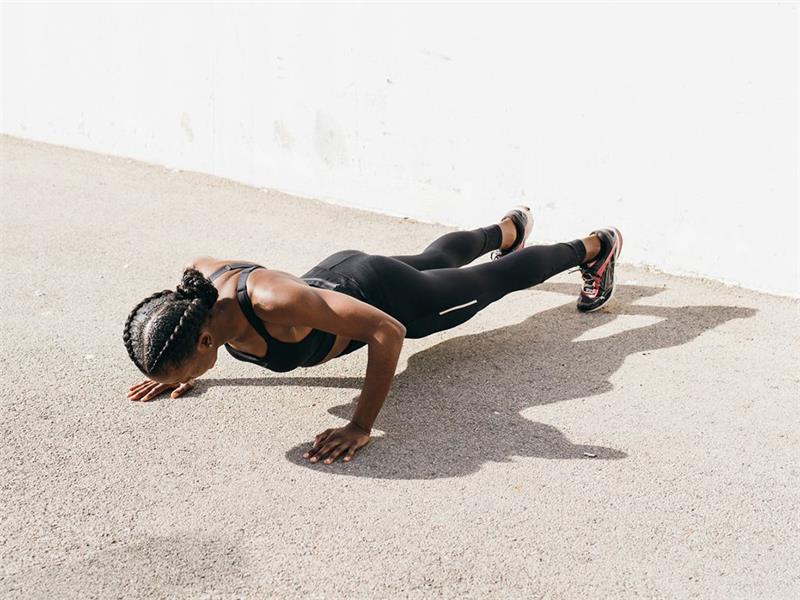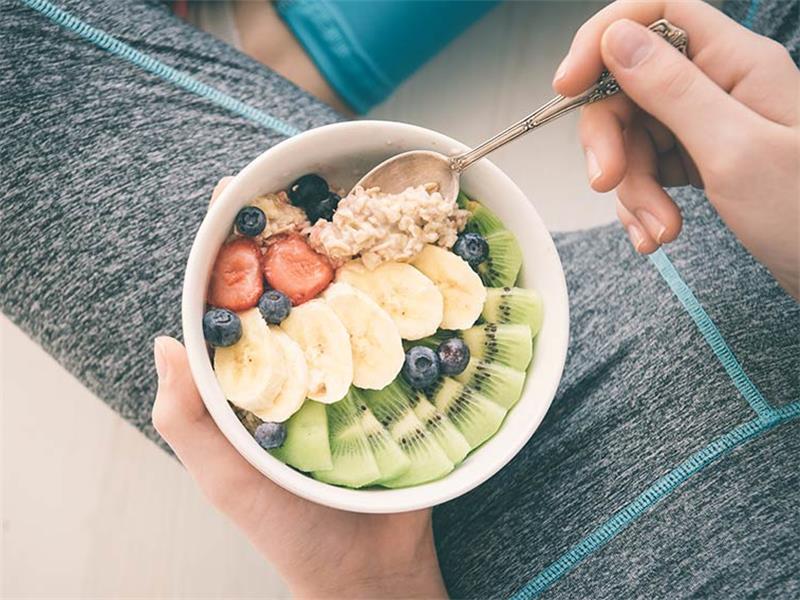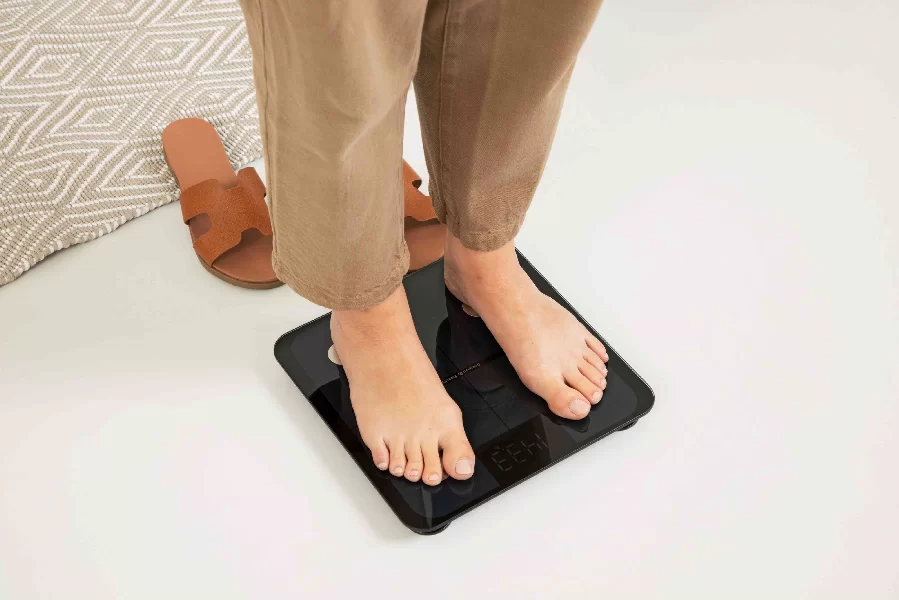Contents
Introduction
Are you struggling to touch your toes or feeling stiff after a workout? Flexibility is an essential component of fitness that can often be overlooked.
Being flexible not only improves your athletic performance but also helps prevent injuries and reduces muscle soreness. In this article, we will cover the importance of flexibility in fitness and the benefits of being flexible.
The Importance of Flexibility in Fitness
Flexibility plays a crucial role in overall fitness. Poor flexibility can lead to a limited range of motion in joints and tight muscles, which can cause pain and discomfort.
It can also affect your posture and balance, making it difficult to perform certain exercises correctly. For example, if you have tight hip flexors, you may struggle with proper form for squats or lunges.
On the other hand, good flexibility allows for full joint mobility which leads to better performance in physical activities such as running, swimming, weightlifting or dancing. It also increases circulation throughout the body which helps deliver nutrients and oxygen to muscles more effectively.
Benefits of Being Flexible
Improving your flexibility has numerous benefits beyond just fitness. It promotes better posture and reduces back pain by increasing the mobility of your spine. It also helps reduce stress on the joints by allowing them to move through their full range of motion.
Being flexible can improve your daily life as well. Daily tasks such as reaching for items on high shelves or bending down to tie your shoes become easier when you have good flexibility.
Additionally, being limber often translates into greater agility whether at work or play. Incorporating stretching exercises into daily routines is beneficial for maintaining or improving flexibility leading to better overall physical functionality in daily life activities along with sports performance capabilities- all leading towards improved quality-of-life outcomes!
Stretching Basics
Stretching is an essential component of any fitness routine, but it’s important to understand the basics before diving in. There are three main types of stretching: static, dynamic, and PNF.
Different Types of Stretching
Static stretching involves holding a stretch for a prolonged period, typically 30 seconds to 1 minute. This type of stretching is great for improving flexibility and range of motion.
Some common examples include hamstring stretches and quadricep stretches. Dynamic stretching involves moving through a range of motion in a controlled manner.
This type of stretching is great for warming up before exercise and improving mobility. Some common examples include leg swings and arm circles.
PNF (proprioceptive neuromuscular facilitation) stretching involves combining static stretching with contracting and relaxing the muscle being stretched. This type of stretching is great for improving flexibility and range of motion quickly but should be done carefully to avoid injury.
The Importance of Warming Up Before Stretching
Before starting any type of stretching routine, it’s important to warm up your muscles first. This can be done with light cardio exercises like jogging or jumping jacks or by doing some dynamic stretches.
Warming up increases blood flow to your muscles, making them more pliable and less prone to injury during your stretches. You should also make sure you’re properly hydrated before starting any stretching routine, as dehydration can lead to muscle cramps or strains.
It’s also important not to push yourself too hard during your stretches – if you feel pain or discomfort, ease off the stretch until it becomes more comfortable. Incorporating these basic principles into your fitness routine can help improve your overall flexibility and reduce the risk of injury during workouts.
Yoga for Flexibility: Finding Inner Peace and Better Movement
Yoga is a great way to improve flexibility and overall fitness. The practice combines stretching, strength, and balance to increase the range of motion in muscles and joints. Practicing yoga regularly can also lead to improved relaxation, better posture, and reduced stress. Overview of Yoga for Flexibility
The practice of yoga originated in ancient India and has been used for thousands of years as a means of promoting physical health, mental clarity, and spiritual growth. There are many types of yoga practices available today that vary in intensity, duration, and style.
While some forms of yoga focus on strength-building or relaxation techniques, others emphasize flexibility training. These types often include more passive movements such as stretching or holding poses for longer periods of time to encourage the release of tension in muscles. Basic Yoga Poses for Improving Flexibility
One of the most popular styles of yoga that focuses on flexibility is called Hatha Yoga. This form emphasizes gentle movements with an emphasis on breathing techniques that help to relax the body and calm the mind.
Some basic poses you can try include: – Downward-facing dog: This pose lengthens the hamstrings while providing a full-body stretch.
– Forward fold: This pose stretches the entire backside of your body from your calves to your spine. – Cobra pose: This pose strengthens the lower back muscles while opening up the chest.
– Triangle pose: This standing pose stretches the hamstrings while providing an excellent hip opener. Incorporating these basic poses into your daily routine will help improve your flexibility over time.
As with any exercise program, it’s important to listen to your body; if something doesn’t feel right then modify or skip it entirely. With regular practice, you’ll see significant improvements not only in your flexibility but also in your overall fitness level!
Foam Rolling
What is foam rolling?
Foam rolling is a form of self-myofascial release that involves using a dense foam roller to apply pressure to certain areas of the body. This can be done before or after a workout, as well as on rest days. The idea behind foam rolling is to loosen up tight muscles and fascia (the connective tissue that surrounds muscles and organs) in order to improve flexibility, mobility, and circulation.
Benefits of foam rolling for flexibility
There are several benefits of using a foam roller for improving flexibility. First, it can help release tension in tight muscles and increase blood flow to the area being rolled.
This can not only help improve the range of motion but also reduce soreness and stiffness post-workout. Foam rolling can also help break up adhesions (knots) in the fascia that may be limiting mobility.
By applying pressure to these areas with the roller, you can encourage them to release and restore elasticity to the tissue. Additionally, foam rolling has been shown to increase proprioception (awareness of one’s body position) which can lead to better movement patterns during exercise or other daily activities.
How to use a foam roller
To use a foam roller for improving flexibility, start by choosing an area of your body that feels tight or tense. Place the roller beneath that area (for example, if you’re targeting your hamstrings, sit on the roller with your legs extended in front of you) and slowly roll back and forth over it.
As you roll over any particularly tender or tight spots, pause for 10-20 seconds and focus on breathing deeply into the area being targeted. You can adjust the pressure by shifting more or less weight onto the roller.
Repeat this process for each area you want to target – common areas include the IT band, quad muscles, and upper back. Just be sure to avoid rolling over any joints or bony areas.
Overall, foam rolling can be a great addition to your flexibility routine. By using a foam roller regularly, you can help release tension in your muscles and improve your overall mobility and range of motion.
Pilates: A Powerful Tool for Flexibility
Pilates is a low-impact, highly effective exercise method that focuses on building core strength and improving flexibility. It was developed in the early 20th century by Joseph Pilates and has since become a popular form of exercise around the world. Pilates can be done using equipment like a reformer or with just a mat and some props.
Benefits of Pilates for Flexibility
One of the main benefits of Pilates is its ability to improve flexibility. The exercises performed in Pilates are designed to gently stretch muscles while also strengthening them. This helps prevent injury while improving mobility and range of motion.
Pilates also focuses on proper alignment, which can help reduce tension in the body and improve overall posture. Improved posture not only looks better but also allows for better movement patterns, leading to more fluid movements during exercise.
Basic Pilates Exercises for Improving Flexibility
There are many exercises within the realm of Pilates that can help improve flexibility. One basic exercise is called the “spine stretch.” Sit on your mat with your legs straight out in front of you, feet flexed. Place your hands behind your head with your elbows wide.
Inhale deeply, then exhale as you round your spine forward, moving from your lowest ribs down toward your pelvis. Hold this position for a few seconds before inhaling deeply again as you roll back up to sitting.
Another great exercise is called “rolling like a ball.” Sit on your mat with your knees bent and feet flat on the ground. Wrap arms around shins like giving yourself a hug.
As you inhale deep into your belly pull your heels towards the seat, and round back towards your thighs, tuck your chin into your chest. Exhale and roll backward onto shoulder blades keeping heels connected to the seat until reaching a point where the balance will be lost.
Inhale and stop then exhale and roll back up to the starting position. These are just a couple of examples, but there are many more Pilates exercises that can help improve flexibility.
It’s important to remember to always listen to your body and never push yourself beyond your limits. With regular practice, you’ll notice a significant improvement in your flexibility, strength, and overall fitness.
Tips for Improving Overall Flexibility
Consistency is Key
Improving your flexibility requires regular practice and consistency. It’s not enough to stretch once a week or only before and after workouts. Aim to stretch every day, even if it’s just for a few minutes.
Consistent stretching will help to lengthen your muscles, increase your range of motion and prevent injury. Set aside a specific time each day for stretching, whether it’s first thing in the morning, during lunch break or before bed.
Make it a habit so that it becomes second nature. You can also set reminders on your phone or computer to help you remember.
Incorporating Stretching into Your Daily Routine
Incorporating stretching into your daily routine is an excellent way to improve flexibility and maintain mobility. Start by taking short breaks throughout the day to stretch different parts of your body.
For example, if you spend a lot of time sitting at a desk, take short breaks every hour or so to stand up and stretch your legs and hips. You can also stretch while waiting in line at the grocery store or brushing your teeth.
Another way to incorporate stretching into your daily routine is by practicing yoga or Pilates regularly. These forms of exercise not only promote flexibility but also provide other benefits such as relaxation, stress relief and improved posture.
Listening to Your Body
When it comes to improving flexibility, listening to your body is crucial. Pushing too hard during stretches can lead to injury while not pushing enough may not yield results.
Pay attention to how your body feels during stretches and adjust accordingly. If you feel discomfort or pain, back off the stretch slightly until you feel comfortable again.
It’s also important not to compare yourself with others when it comes to flexibility. Everyone has different levels of flexibility due to factors such as age, genetics, and lifestyle.
Focus on your own progress and celebrate small victories along the way. With consistency and patience, you’ll be able to improve your flexibility and enjoy the benefits of a more limber body.
Conclusion
Flexibility is essential to overall fitness and health
Incorporating stretching and flexibility exercises into your fitness routine can have numerous benefits. Improved flexibility can increase the range of motion, reduce the risk of injury, and even improve posture.
Additionally, stretching can help reduce muscle soreness and promote relaxation. Having good flexibility is important not only for physical health but also mental well-being.
Flexibility exercises such as yoga and Pilates can reduce stress levels and improve overall mood. Engaging in regular stretching can also promote better sleep quality.
Incorporating these tips can help improve your overall fitness and quality of life
To reap the benefits of improved flexibility, it’s important to consistently incorporate stretching into your daily routine. Start by committing to just a few minutes each day, gradually increasing the amount of time spent on stretching exercises as you become more comfortable.
It’s also important to listen to your body during stretching exercises. Avoid pushing yourself too hard or forcing your body into uncomfortable positions.
Instead, focus on breathing deeply throughout each stretch and allowing your body to naturally relax. Remember that every person’s body is different and will respond differently to different types of exercises.
Don’t be afraid to try out different techniques or seek guidance from a professional trainer or instructor. Incorporating these tips into your fitness routine can lead to improved flexibility, increased physical performance, reduced risk of injury, and an overall boost in quality of life.
So why wait? Start incorporating some stretches into your daily routine today!













